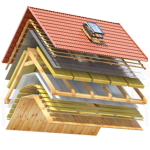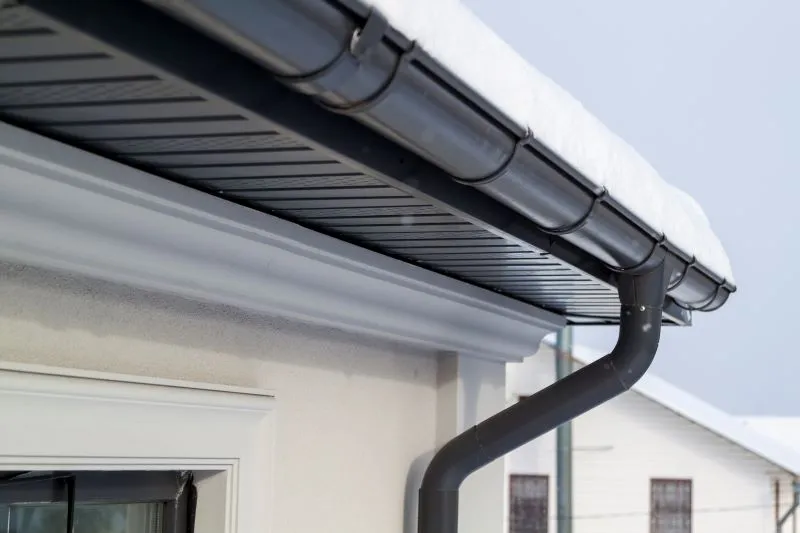
Gutter Installation

Gutters play a crucial role in protecting your home from water damage by collecting and channeling rainwater away from the foundation. They come in various materials, shapes, and sizes, making it essential to consider factors such as climate, house design, and budget before making your choice. Gutter installation can be a do-it-yourself project for some homeowners, but hiring a professional ensures proper function and longevity.
Understanding the role of gutter systems is the first step to making an informed decision. From fabrication materials to available styles and selection methods, there is much to consider when planning gutter installations. Proper maintenance and monitoring will then prolong the life of your gutters and safeguard your home in the long run.
Gutter maintenance is key to maximizing their performance and preventing potential damage. Useful practices include regular cleaning, checking for leaks or corrosion, and ensuring proper water flow. Attending to these tasks will help you protect your home and get the most out of your investment in gutter systems.
Understanding Gutter Systems
Types of Gutters:
- Seamless Gutters: Custom-made gutters formed from a single continuous piece of material.
- Sectional Gutters: Come in pre-cut sections that are connected during installation.
Gutter Profiles:
- K-style Gutters: Resemble the letter "K" and allow for greater water capacity.
- Half-round Gutters: Have a rounded shape and are often used for historical or traditional homes.
Components and Installation:
- Gutter Runs: Horizontal sections that collect and direct rainwater.
- Downspouts: Vertical pipes that convey water from the gutters to the ground.
- Gutter Flashing: A layer of material that helps prevent water from seeping behind the gutters.
- End caps: Attachments that close off the ends of gutters, preventing debris buildup.
Gutter Installation Steps:
- Measure and calculate the required pitch for proper drainage.
- Install fascia boards and gutter flashing.
- Attach gutter sections, securing them with brackets and joining them with sealant and connectors.
- Install downspouts and secure them with straps.
Materials and Durability:
- Aluminum: Lightweight and rust-resistant.
- Steel: Strong and durable, requires periodic maintenance.
- Copper: Adds an upscale, elegant look, higher installation costs.
- Vinyl: Cost-effective, lightweight, may crack in extreme conditions.
New gutter installations will require labor and materials, both affecting the total costs. It's essential to work with a reputable contractor or gutter installer to ensure proper installation and gutter system performance. Regular maintenance, such as sealing leaks or holes and fixing sagging, will help extend the system's life and protect your home from water damage.
Key Takeaways
- Gutters are essential to protect your home from water damage and come in various materials, shapes, and sizes.
- It is important to understand the role of gutter systems, select the right type, and maintain them to prolong their longevity and efficiency.
- Regular cleaning, leak detection, and proper water flow are crucial in maintaining and protecting your gutters.
Maintaining and Protecting Your Gutters
Regular Cleaning and Repairs
- To keep your gutters functioning properly, regular maintenance is essential. It is recommended to clean your gutters at least twice a year, particularly during the fall season when leaves and debris accumulate. Remove any buildup from the gutters to prevent clogs and water damage. Inspect the entire system for loose or damaged parts, and make necessary repairs. You may use a hose to test the flow of water, ensuring that it is directed away from the foundation and landscaping.
- In some cases, especially in regions with a lot of trees, more frequent gutter cleaning may be necessary. Investing in gutter guards can be a helpful solution. These systems, such as micro-mesh screens, helmets, and leaf filters, prevent debris from entering the gutters, reducing the need for regular cleaning.
Additional Considerations
- Proper installation and maintenance can aid in the prevention of gutter-related issues. Water damage to your roof, siding, and foundation can lead to mold and mildew growth, erosion, and other costly problems. To prevent this, ensure that gutters are securely attached and properly sized to handle the volume of water experienced in your climate.
- When setting up a gutter system, consider diverting the water at least 5-6 feet away from your home using downspout extensions. This can prevent pooling water in your lawn or garden, protecting your landscaping. Additionally, your gutter downpipe should be raised about 1 cm above the bottom of the gutter to avoid the accumulation of sediment and enhance the system's longevity.
- Overall, consistent maintenance and appropriate protection measures are crucial for your gutters to function effectively. By staying proactive, you will reduce the risk of water damage and maintain the aesthetics and value of your property.